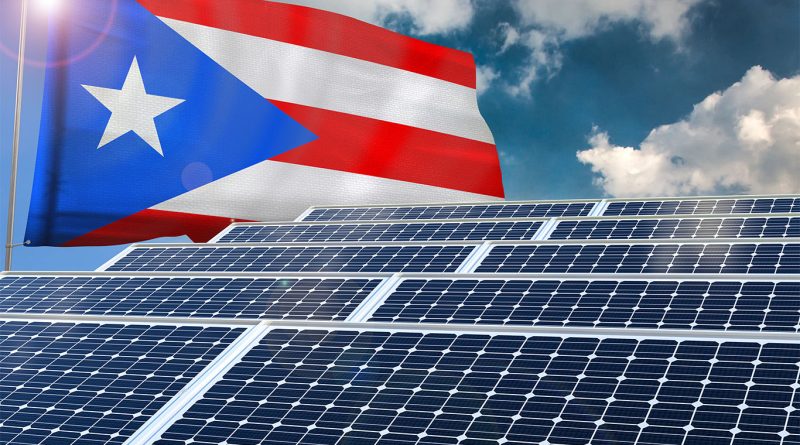Community power: Puerto Rico’s microgrids withstand island-wide outage
Subscribe to our free newsletter today to keep up to date with the latest renewable energy news.
When Puerto Rico’s entire power grid failed on April 16, 2025, the lights in Adjuntas, a small mountain town, stayed on. This was no accident. Instead of depending solely on the island’s aging, hurricane-battered grid, Adjuntas relies on an evolving network of community solar microgrids, locally maintained storage, and a model of energy independence built from the ground up. For thousands across Puerto Rico, these experiments in grid orchestration have become the clearest path toward a more resilient future.
Why Puerto Rico’s power grid keeps failing
Puerto Rico’s electricity grid has long struggled under the weight of storms, neglect, and poor planning. The devastation of Hurricane Maria in 2017 turned the island’s aging infrastructure into a national headline, with nearly 3,000 lives lost and months of widespread darkness. In the years since, federal agencies have approved more than $20 billion for grid reconstruction and resilience. Yet many communities still live with fragile cables, unreliable generation, and maintenance that has failed to keep up with growing demand.
Tropical storms like Ernesto in August 2024, routine vegetation overgrowth, and aging components have left entire towns repeatedly vulnerable to blackouts. Recent failures, such as the April island-wide outage and the New Year’s Eve 2024 cable breakdown, show how easily single points of failure can darken an entire region. While FEMA’s aid and private contracts have tried to modernize the grid, delays and political friction on the mainland and in San Juan have slowed progress to a crawl.
Inside Adjuntas, the town pioneering grid orchestration with microgrids
While frustration grows over bureaucratic logjams, places like Adjuntas are quietly rewriting Puerto Rico’s energy script. Led by the nonprofit Casa Pueblo, the town partnered with Oak Ridge National Laboratory to test a new way to link microgrids. This approach, called grid orchestration, allows multiple microgrids to exchange power and balance supply, even if one system is damaged or disconnected from the wider grid.
In April’s blackout, three of Adjuntas’ five microgrids stayed online, each trading energy through net metering agreements while isolated grids supported additional local needs. The microgrids, which provide about 228 kilowatts of solar generation and over a megawatt-hour of storage, supplied steady power to homes and 15 businesses. Though small in scale, the system offered a rare lifeline during an island-wide outage.
Arturo Massol-Deyá, Casa Pueblo’s director, sees redundancy as the key to resilience. By proving that community-run microgrids can work independently yet collaboratively, Adjuntas has positioned itself as a blueprint for other towns in Puerto Rico and beyond.
The community-driven surge in solar and battery adoption across the island
Beyond Adjuntas, a broader bottom-up movement is taking shape. Many Puerto Rican households now see rooftop solar and battery storage as the best hedge against an unreliable grid and an expensive power supply. Today, roughly 4,000 solar-plus-storage systems come online each month. Distributed solar capacity has surpassed 1.14 gigawatts, with nearly 2.34 gigawatt-hours of batteries connected. In total, residential solar now supplies over 12.5 percent of Puerto Rico’s household electricity needs.
Unlike government-led grid repairs, most of this new capacity is privately financed. Leases, loans, and Power Purchase Agreements make it possible for families to secure their own backup power. When the central grid fails, these decentralized systems often keep the lights on.
The federal funding shift from rooftop solar to fossil-fueled grid repairs
Despite local momentum, new policy shifts threaten to slow Puerto Rico’s push for distributed clean energy. In May, the US Department of Energy announced that $365 million originally set aside for rooftop solar would instead be used to reinforce the island’s central grid. Federal officials argue the money will address urgent shortfalls in system flexibility, control, and supply security. But many in Puerto Rico’s solar industry see it as a step backward.
Critics, including Representative Nydia Velázquez of New York, denounced the redirection as a betrayal of communities still waiting for renewable investment. The debate reveals a deeper tension over whether Puerto Rico’s path forward should rely on conventional grid repairs or community-led renewables.
The work in Adjuntas continues to evolve. Casa Pueblo has launched a new Community Laboratory for the Energy Transition, drawing academics and energy experts to experiment with microgrid technology. The next milestone will be connecting microgrids that are not clustered together, proving that resilience can scale beyond town limits.
As the island braces for a hurricane season expected to stretch the grid to its limits again, many Puerto Ricans are making their own investments in solar and storage. Despite federal priorities that still lean heavily on fossil fuel generation, communities like Adjuntas show that local ownership and technological innovation can light the way forward, even when the power goes out.
Sources:
